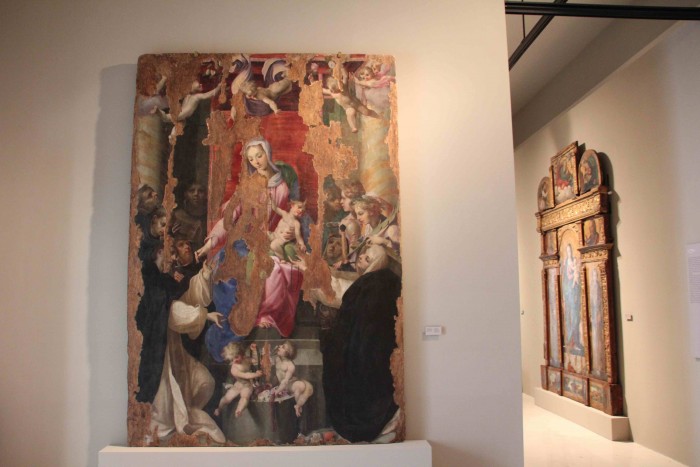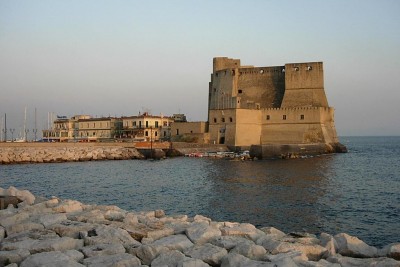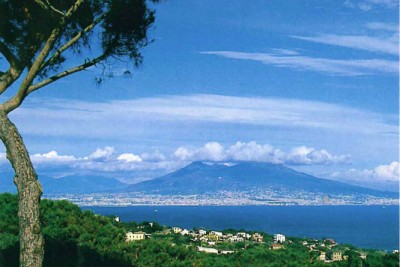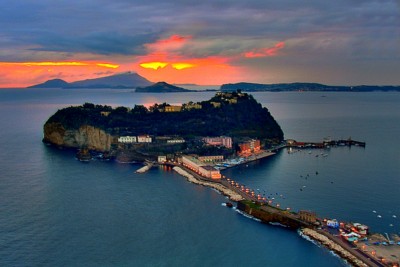The Cathedral Is Its Main Tourist Attraction, but Salerno Offers Much More
In the 16th century the city became a great centre of learning, culture and the arts








Museo Diocesano San Matteo
The Museo Diocesano San Matteo is housed in the building that was once home to an ancient seminary, founded in 1563.
The original nucleus of the collection is made of works of art belonging to the Cathedral. It includes great examples of medieval art such as a series of ivory tablets dating back to the 11th and 12th century which depict scenes from the Old and New Testament, and 11 illuminated leaves illustrating the text of the ‘Exsultet’.
The museum’s collection testifies to the development of figurative culture from the eastern-Byzantine tradition to the Baroque.
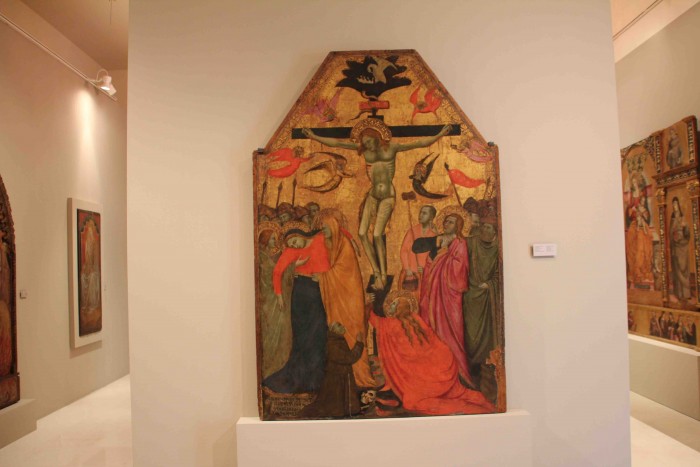
Address: Largo del Plebiscito, 12
Open: Wednesday to Monday
Winter hours from 8.30 AM to 7.30 PM
Summer hours from 09.30 AM to 8.30 PM
Closed on Tuesday
Giardino della Minerva
In the heart of Salerno lies a green oasis known as the Garden of Minerve. It is the oldest botanical garden in Europe, started in the 13th century with medicinal herbs and plants used for experimentation and therapeutic purposes by the Medical School of Salerno.
It was founded by Matteo Silvatico, a botanist and practitioner at the school who was one of the doctors on the king's medical team. Silvatico used his family's influence and land to start the Giardino.
With its own a unique water system made of canals, ponds and fountains, the Giardino has many terraces with orchards and rare flowers.
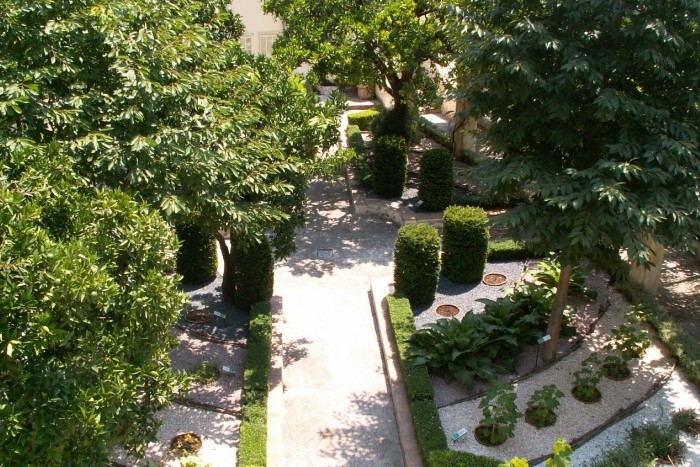
Address: Via Ferrante San Severino, 1
Telephone: (+39) 089 252 423
Open: in the summer 10:00 AM to 1:00 PM and 5:30 PM to 8:00 PM.
In the winter 9:00 AM to 1:30 PM.
Closed on Monday.Castello Arechi
The hilltop castle above Salerno dominates the city below from nearly 300 meters (900 feet) above sea level and is a historic reminder of its past.
Originally built in the Byzantine era, in the 8th century was taken over by the Longobard Duke of Benevento, Arechi II, who gave the castle its name. It was passed to the Normans and then the Aragons.
The towers that once served as look-out posts were connected by a thick encircling wall. The castle fell into disrepair until a slow and long restoration process was started.
The castle overlooks the Mediterranean with views stretching towards the Amalfi Coast and offers a pretty backdrop to the hillside landscape.
Beside offering a great view, the castle is surrounded by natural trails and landscape.
The museum in the castle has a collection of ceramics, coins, and arms, along with a salon for special exhibits and events.

Address: Via Benedetto Croce
Telephone: (+39) 089 225 578 Medieval Aqueduct
The aqueduct was initially built in the 9th century to supply water to the monastery of St. Benedict, near the eastern walls, until an underground canal was added to also supply the area of the convent of Piantanova, in Via Mercanti.
The aqueduct consists of two branches, one coming from the hills to the north, the other from the heights east of the city. These two aqueducts culminated at Via Arce, at one corner of the ancient city walls.
The arched aqueduct was dubbed "the Devil's Bridge". According to the legend, it was built in one night, with the help of demons, by a well-known 12th century Salerno magician, Pietro Barliario. Popular superstition also held that venturing under the arches between dusk and dawn would have brought personal encounters with evil spirits. The fact that the aqueduct was close to the highest sector of the city walls, an area that was largely uninhabited, probably helped contribute to the legend of the aqueduct as a creepy, demonic place.
Today, the remnants serve as a reminder of the gracefulness of ancient architecture and the ingenuity that allowed the Salernitani to bring water from the hills to town.
It is located at the intersection of the Old Town where Via Arce, Via Velia and Via Fieravecchia come together.
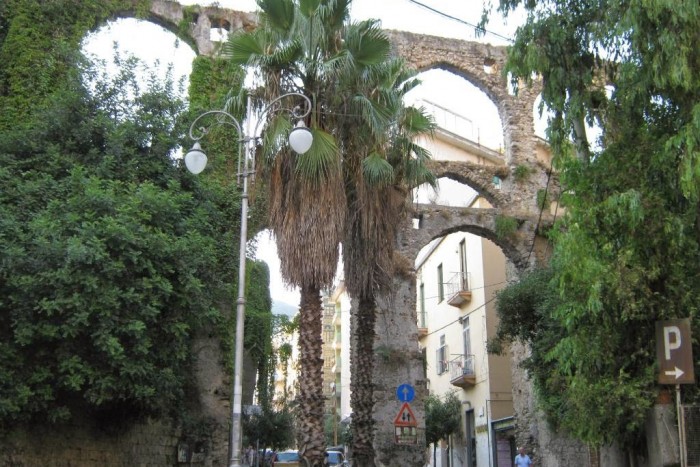
Address: Via Arce
Palazzo Fruscione
his Palazzo in the historic center of Salerno, near the ancient Via dei Canali, was built over the ruins of an ancient Roman thermal bath complex. Some tufa arches and columns can still be seen at the foundation level.
Named for the last family that owned it, the Fruscione, who opened it to the public in the 1960s, the Palazzo dates back to the Longobards era.
The façade bears gothic-like pointed arches with vaulting and ordered tiny balconies. There are also traces of Medieval-era paintings on portions of the exterior walls.
The palace is abutted by the bell tower of the Church of San Pietro a Corte, which was once a private royal Lombard chapel.
An arch and defensive wall also date to that era.
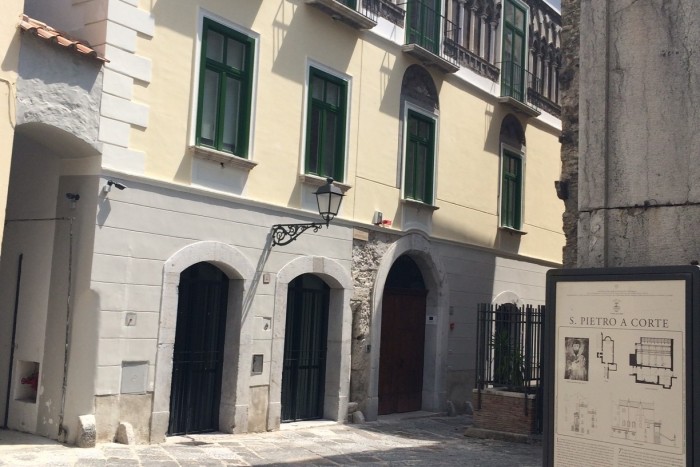
Via dei Canali Via dei Mercanti
Arguably the most characteristic street in Salerno, Via dei Mercanti crosses the entire old town.
It was the principle avenue of commerce in the Medieval period and still a center of life, with its shops, boutiques, eateries and antique buildings that line up along the lane.
The slender street starts at the Arco dei Arechi, a gateway built by the Longobards that tunnels its way into the historic quarter.
On the right side the arch is supported by an ancient Corinthian style column that was originally part of a pagan temple. Buildings outline the narrow street with fanciful wrought iron balconies, flower boxes, painted shutters and laundry gentle billowing in the breeze.
Archways cross overhead, and even narrower alleyways intersect it. Via dei Mercanti wends along for about a kilometer until it reaches Piazza Portanova, where the "modern" Salerno begins.
Here the street opens up to a wider avenue known as Corso Vittorio Emanuele and the main shopping district of the city.
Along the way are Salerno's most prestigious palaces, like Palazzo Genovese, which was built in 1744 in late Baroque style. It is fronted with the Fontana dei Pesci (Fountain of the Fish) by the Royal Palace of Caserta architect, Luigi Vanvitelli, and the Renaissance Palazzo Pinto, near the Cathedral. Today, Palazzo Pinto is the home of the Pinacoteca, the city's art gallery (whose collections includes works from the Renaissance period through the early 1900s).
The Church of the Santissimo Crocifisso is worth a visit, while the church of San Giorgio is an opulent Baroque gem with a wealth of frescoes.
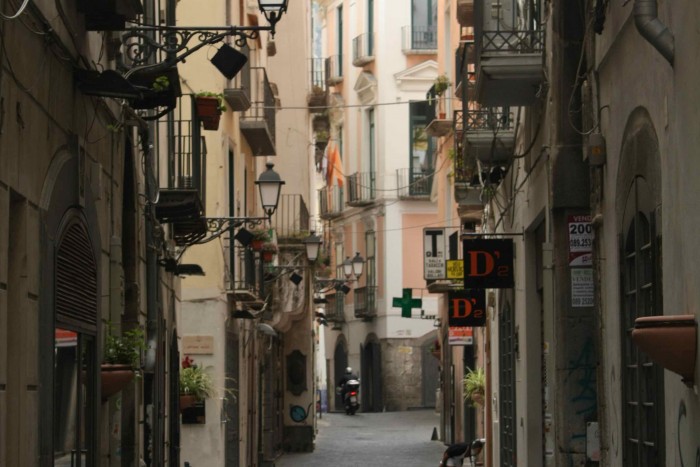
The Duomo, or Cattedrale di San Matteo
The Cathedral, or Duomo, is the main church in the city and a major tourist attraction as it is considered one of the most beautiful medieval church in Italy. It is dedicated to Saint Matthew, whose tomb is inside the crypt.
Inside the Duomo, in the right apse, is also the tomb of Pope Gregory VII, who rejected German domination of the Holy Roman Empire and died in exile in Salerno in 1085.
Begun by Robert Guiscard in 1076 in the episcopate of Alfano I, the Duomo was consecrated by Pope Gregory VII in 1084.
In 1688, architect Ferdinando Sanfelice remodelled the interior in the Neapolitan Baroque and Rococo styles but a 1930s restoration brought it back to an appearance similar to the original one.
One of the Cathedral most striking features is the mid-12th century Arabic-Norman style bell tower. With its small arcades, mullioned windows and 8 large bells, it rises 56 meters (184 feet) above the medieval center of the city.
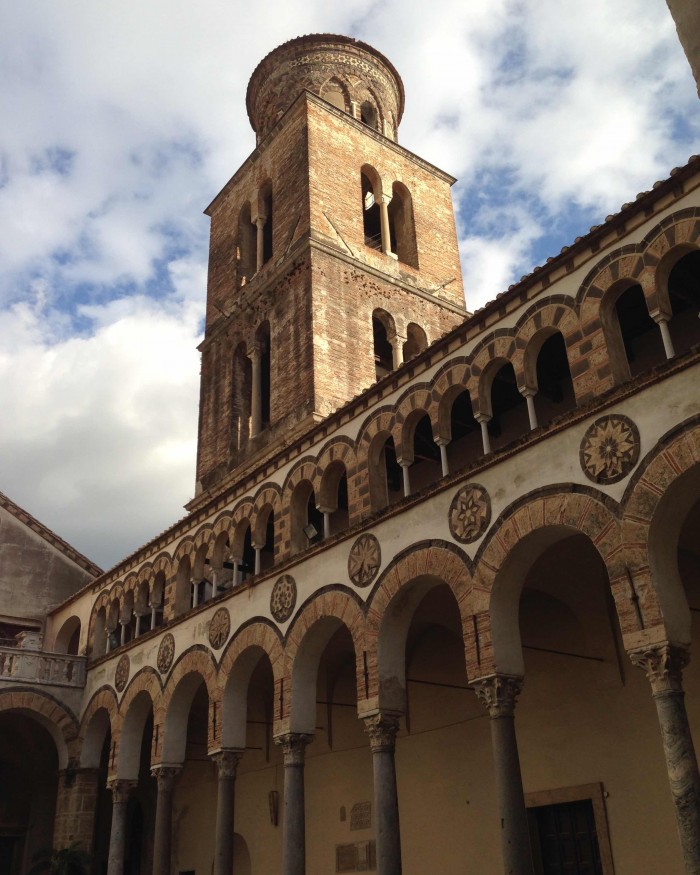
The façade of the Duomo has a Romanesque portal, called the Porta dei Leoni, or Door of the Lions, after the two marble lion statues flanking the doorway, with Byzantine-style bronze doors. Transported from Constantinople in 1099, the doors have 56 panels with figures, crosses and stories from Jesus's life.
The entrance has a portico with a series of ancient Roman sarcophagi and 28 ancient columns whose pointed arches, with lava rock intarsia, clear show the influence of Arab art.
The interior has a nave and two aisles, divided by pilasters in which the original columns are embedded, and three apses.

At the front of the central nave there are two 12th century ambones with intricate Arab-Sicilian style mosaic work. In the Middle Ages these elevated platforms were used for the liturgy during important celebrations.
The east end of the church features a grand central apse flanked by two smaller apses. All three are decorated with 12th century vivid hues of blue, red and gold mosaics, which provide a glimpse of the ancient glory of the Duomo.
Artworks include two pulpits with mosaic decorations, paintings by Francesco Solimena, a 14th century Gothic statue of Madonna with Child and the tomb of Pope Gregory VII. A little door in the north aisle (near the front of the church) leads down to the crypt of San Matteo (St. Matthew).
The crypt is a vaulted hall with a basilica-like plan divided by columns. It was first restored in 1606-1608 by architect Domenico Fontana and his son Giulio. Marble decorations were added in the 18th century.
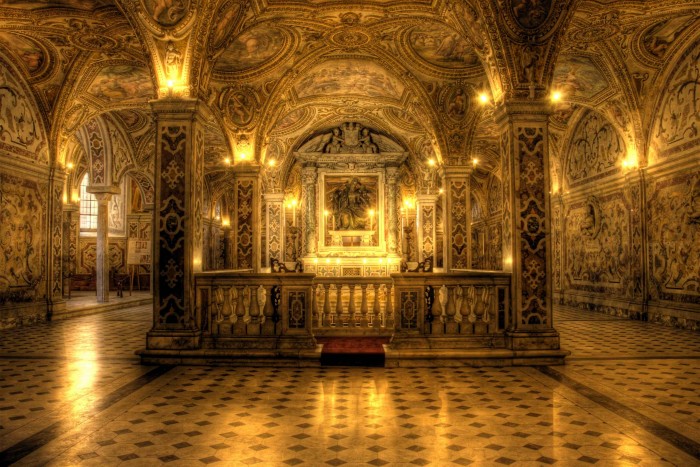
The ceiling frescoes were painted by Belisario Corenzio (c. 1558–1643), a Greek-Italian Mannerist painter reputed to have studied under Tintoretto, and depict scenes from the Gospel of Matthew, as well as some episodes of history of Salerno (such as the siege of the city by the French).
The Museum of the Duomo houses artworks from different ages, including the silver statues of the Salernitan Martyrs (13th century) and documents of the renowned Schola Medica Salernitana, one of the first universities in Europe.
